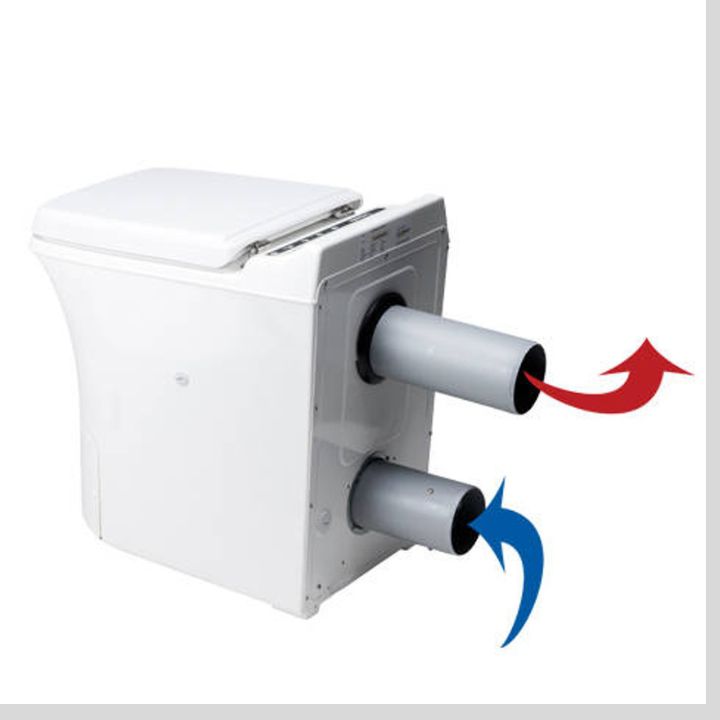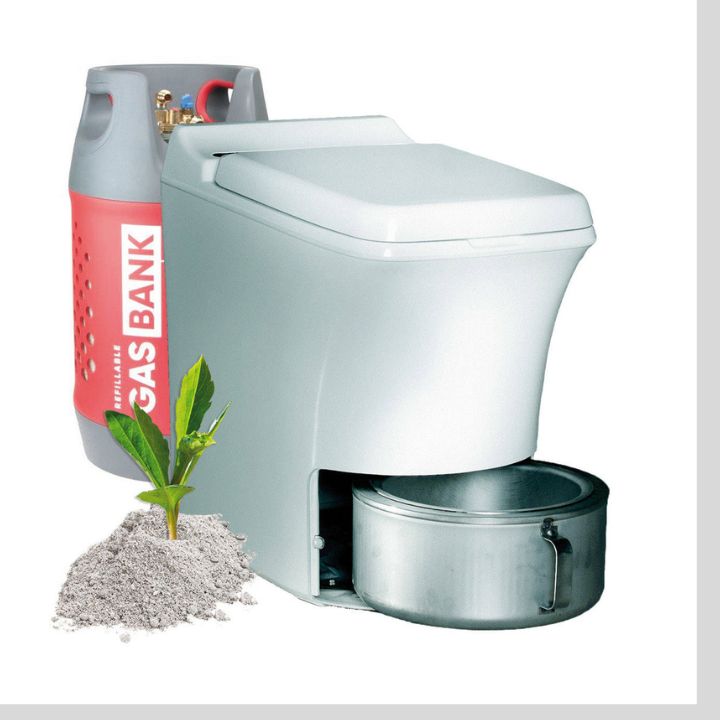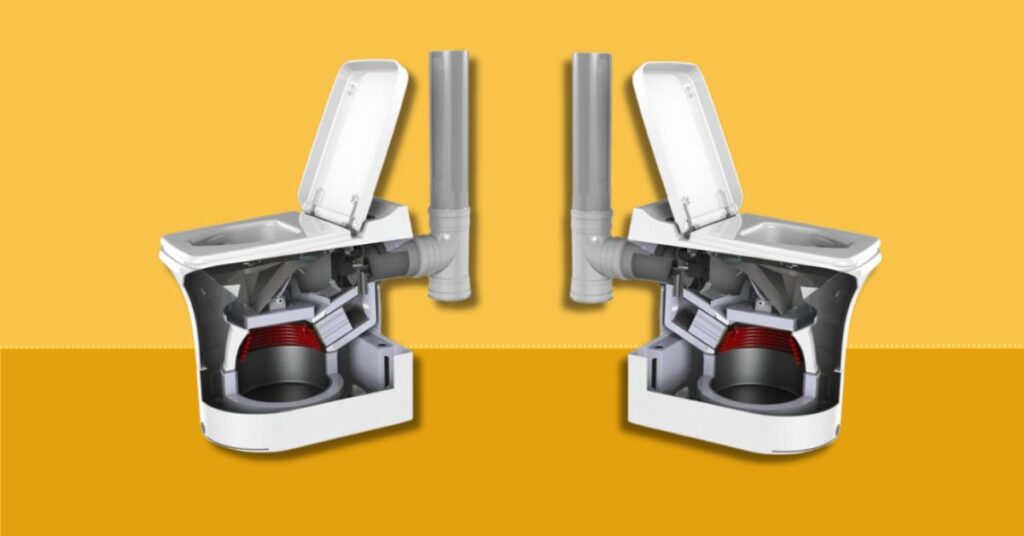Are you tired of dealing with traditional flush toilets? Have you heard about the latest innovation in the world of bathroom technology – incinerating toilets? These toilets use high heat to burn waste into ash, eliminating the need for water and sewage systems. But are they really worth the investment?
In this blog post, we will dive into the pros and cons of incinerating toilets to help you decide if they are the right choice for your household. From saving water to potential maintenance issues, we will cover it all. So let’s get started and explore the world of incinerating toilets together!
Use links below for easy navigation
Understanding Incinerating Toilets – How Incinerating Toilets Work
Incinerating toilets revolutionize waste disposal by harnessing the power of heat. Unlike conventional flush toilets, they don’t rely on water. Instead, these toilets incinerate human waste into sterile ash through high temperatures. This not only reduces the volume of waste but also eliminates the need for complex plumbing systems.
Types of Incinerating Toilets
There are two main types of incinerating toilets: electric and gas-powered.
Electric Incinerating Toilets:
These toilets utilize electrical heating elements to reach the necessary high temperatures for incineration. They are suitable for various settings and are often favored for their efficiency and ease of use.
Gas-Powered Incinerating Toilets:
Using propane or natural gas, these toilets generate the heat required for incineration. They are commonly chosen for off-grid locations where electricity may be limited.
Understanding the fundamentals of how incinerating toilets operate and the distinctions between electric and gas-powered models lays the groundwork for exploring their pros and cons in the broader context of modern sanitation.
Before we head to the detailed pros of incinerating toilets, let’s take a quick look at the pros and cons of incinerating toilets in the table below.
| Incinerating Toilet Pros | Incinerating Toilet Cons |
|---|---|
| Eco-friendly | High energy costs |
| Minimal water Usage | Tedious to maintain |
| No plumbing needed | Frequency of Disposal |
| Reduction in Sewage Output | Cleaning and Upkeep |
| No septic system needed | Destroy composting nutrients |
| Easy to move around | Requires venting |
| Energy Independence | |
| Works in all climates | |
| Integration into Home Structures |
Pros of Incinerating Toilets
In the pursuit of sustainable living, incinerating toilets emerge as eco-conscious alternatives with distinctive advantages.
Minimal Water Usage:
Incinerating toilets operate without the need for water, a stark contrast to traditional flush toilets. This not only conserves water resources but also minimizes the environmental impact associated with water-intensive sewage systems.
Reduction in Sewage Output:
By incinerating waste into sterile ash, these toilets significantly reduce sewage output. This proves especially beneficial in areas where traditional sewage treatment may be challenging or unavailable, contributing to a cleaner environment.
Ideal for Remote Locations:
Incinerating toilets are a game-changer for off-grid living. Whether in a remote cabin or a mobile home, these toilets provide a sanitation solution without relying on complex plumbing infrastructure.
Integration into Home Structures:
In residential settings, incinerating toilets seamlessly integrate into various home structures. Their compact designs and flexible installation options make them suitable for bathrooms of all sizes. Users appreciate the space-saving aspects and modern aesthetics.
Energy Independence:
For those seeking off-grid sustainability, incinerating toilets offer energy independence. Electric models operate efficiently, and gas-powered options provide flexibility in locations where electricity may be limited.
Embracing these eco-friendly features, incinerating toilets offer a shift toward a more sustainable and self-sufficient approach to waste management.
Understanding these pros is key to making an informed decision about integrating this innovative technology into your living space.
Now let’s take a detailed look at the cons of incinerating toilets.
Cons of Incinerating Toilets
While incinerating toilets present an innovative approach to waste management, it’s crucial to consider the potential drawbacks before embracing this technology.
Investment Considerations:
One of the primary drawbacks is the high initial cost of installing an incinerating toilet. The upfront investment can be a deterrent for budget-conscious individuals or those seeking cost-effective sanitation solutions.
However, it’s essential to weigh this against long-term cost savings. Reduced water usage and minimal maintenance requirements can translate into lower operational costs over the life of the toilet.
Addressing Power Requirements:

Incinerating toilets, especially electric models, rely on power for the incineration process. This dependence on electricity can be a limitation, particularly in areas with inconsistent power supply or during power outages.
User Satisfaction and Challenges:
User satisfaction with residential installations often revolves around the reduced water usage and the simplicity of waste disposal. However, challenges can arise, particularly in the adjustment period, as users adapt to the incineration process and maintenance routines.
Understanding the user experiences helps potential users gauge the practicality of incinerating toilets in their specific contexts.
Environmental Impact:
While gas-powered models provide an alternative, their reliance on propane or natural gas raises environmental considerations. Balancing the energy consumption of incinerating toilets with their ecological footprint is a critical aspect of decision-making.
Navigating these cons involves a careful consideration of your budget, energy availability, and environmental priorities. By understanding the challenges, you can make an informed choice about whether incinerating toilets align with your values and practical needs in modern sanitation.
Maintenance and Operational Considerations for Incinerating Toilets

Ensuring the longevity and optimal performance of incinerating toilets involves strategic maintenance and operational practices. Let’s see what considerations come with incinerating toilets.
Proper Handling of Incinerated Waste
One crucial aspect is the appropriate disposal of incinerated waste, or ash. While incinerating toilets reduce waste volume, the resulting ash requires proper handling. Establish a routine for safe disposal to prevent any environmental impact.
Frequency of Disposal
Understanding the frequency of ash disposal is vital. Regularly empty the ash container to maintain the efficiency of the incineration process and prevent any potential issues.
Cleaning and Upkeep:
Routine cleaning is paramount for incinerating toilets. Keep nozzles and internal components free from any residue to ensure optimal functioning. A gentle approach with appropriate cleaning solutions is advised.
Troubleshooting Common Issues:
Stay vigilant for common issues such as irregular incineration or odors. Addressing these promptly can prevent more significant problems and ensure a seamless user experience.
By adhering to these maintenance and operational considerations, you not only sustain the efficiency of your incinerating toilet but also guarantee a sanitary and trouble-free experience.
The Impact on the Environment: A Closer Look
Let’s talk about the environmental impact of incinerating toilets. On one hand, they dramatically reduce water usage. Traditional toilets flush away around 1.6 gallons of water per use, which adds up over time. Incinerating toilets, on the other hand, use no water at all. They are ideal for regions facing water scarcity or for those who aim to reduce their ecological footprint.
Incinerating toilets also avoid the problem of sewage pollution, a significant concern in areas without proper sewage treatment facilities. The ash produced is sterile and can be safely disposed of. However, it’s not all green and clean. Incinerating toilets consume electricity or gas, contributing to your home’s energy usage. Additionally, they emit small amounts of greenhouse gases and pollutants during the incineration process.
Furthermore, the ash produced needs to be dealt with responsibly. If not properly disposed of, it can potentially harm the environment. So, while incinerating toilets have clear environmental benefits, it’s essential to consider these factors as well.
Conclusion
In the realm of modern sanitation, the journey through incinerating toilets reveals a blend of innovation, advantages, and considerations.
When considering incinerating toilets, it’s crucial to weigh the pros and cons thoughtfully. The eco-friendly features, off-grid suitability, and reduction in sewage output present compelling advantages. However, the initial cost and energy consumption should be considered against long-term savings and environmental impact.
As we navigate the evolution of sanitation technology, incinerating toilets stand as pioneers in redefining waste management. While addressing immediate needs, they also prompt us to envision a future where sustainable solutions coexist with modern living.
As you step into the future of sanitation, may your choices reflect the balance between efficiency and ecological mindfulness.


